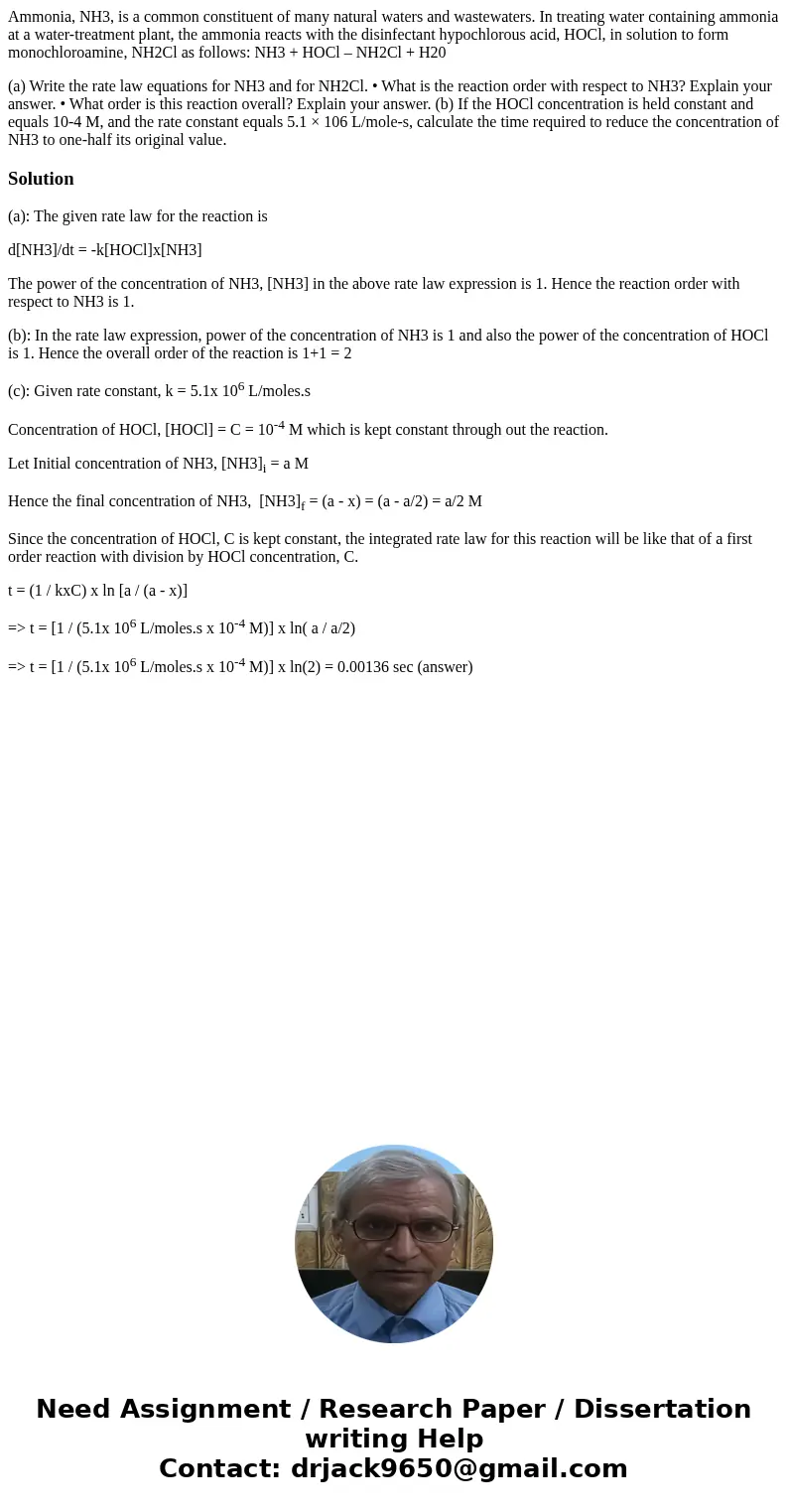Ammonia NH3 is a common constituent of many natural waters a
Ammonia, NH3, is a common constituent of many natural waters and wastewaters. In treating water containing ammonia at a water-treatment plant, the ammonia reacts with the disinfectant hypochlorous acid, HOCl, in solution to form monochloroamine, NH2Cl as follows: NH3 + HOCl – NH2Cl + H20
(a) Write the rate law equations for NH3 and for NH2Cl. • What is the reaction order with respect to NH3? Explain your answer. • What order is this reaction overall? Explain your answer. (b) If the HOCl concentration is held constant and equals 10-4 M, and the rate constant equals 5.1 × 106 L/mole-s, calculate the time required to reduce the concentration of NH3 to one-half its original value.
Solution
(a): The given rate law for the reaction is
d[NH3]/dt = -k[HOCl]x[NH3]
The power of the concentration of NH3, [NH3] in the above rate law expression is 1. Hence the reaction order with respect to NH3 is 1.
(b): In the rate law expression, power of the concentration of NH3 is 1 and also the power of the concentration of HOCl is 1. Hence the overall order of the reaction is 1+1 = 2
(c): Given rate constant, k = 5.1x 106 L/moles.s
Concentration of HOCl, [HOCl] = C = 10-4 M which is kept constant through out the reaction.
Let Initial concentration of NH3, [NH3]i = a M
Hence the final concentration of NH3, [NH3]f = (a - x) = (a - a/2) = a/2 M
Since the concentration of HOCl, C is kept constant, the integrated rate law for this reaction will be like that of a first order reaction with division by HOCl concentration, C.
t = (1 / kxC) x ln [a / (a - x)]
=> t = [1 / (5.1x 106 L/moles.s x 10-4 M)] x ln( a / a/2)
=> t = [1 / (5.1x 106 L/moles.s x 10-4 M)] x ln(2) = 0.00136 sec (answer)

 Homework Sourse
Homework Sourse